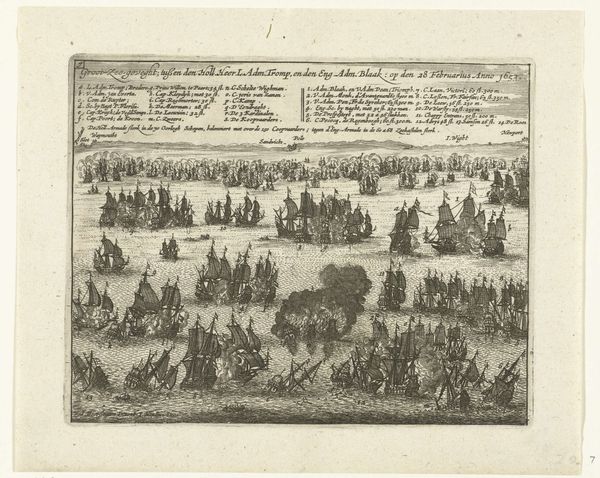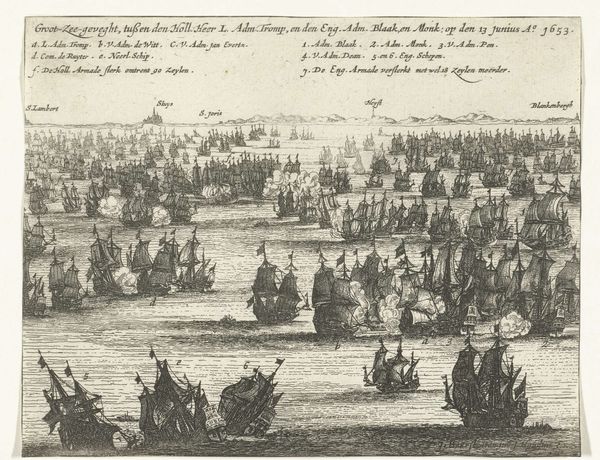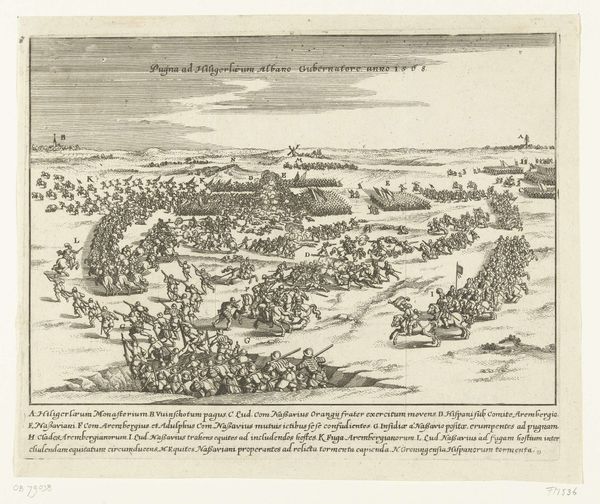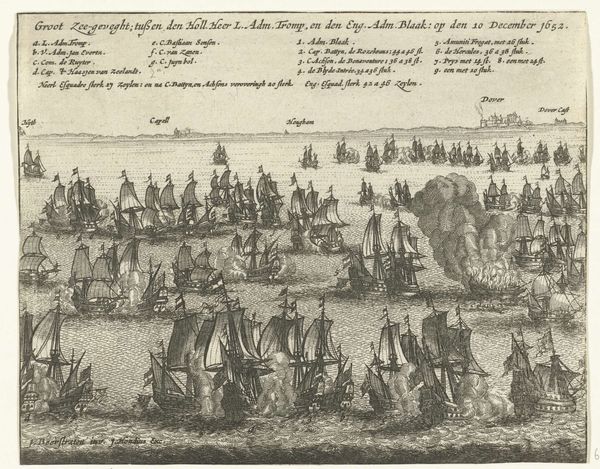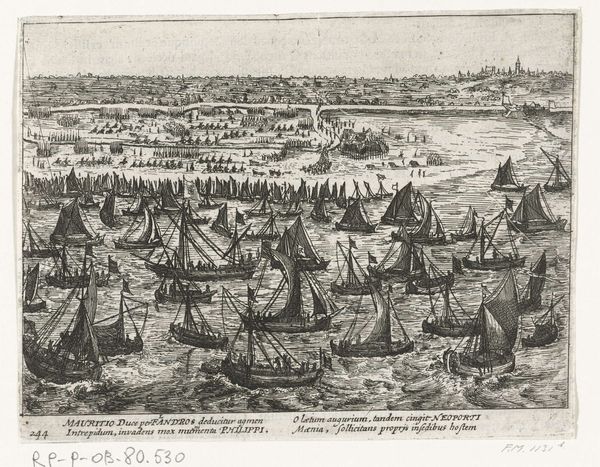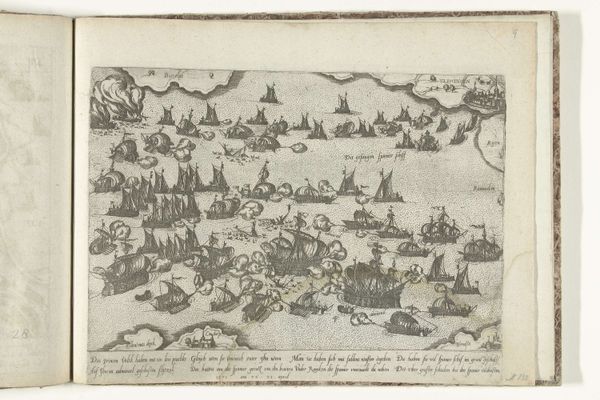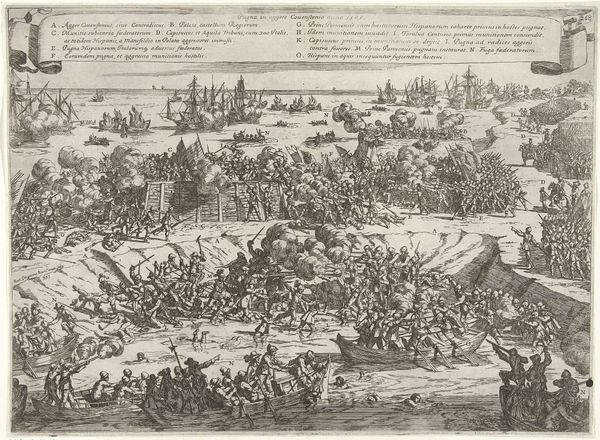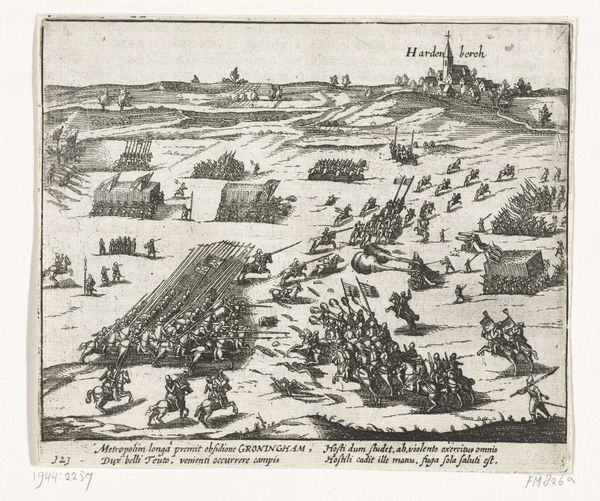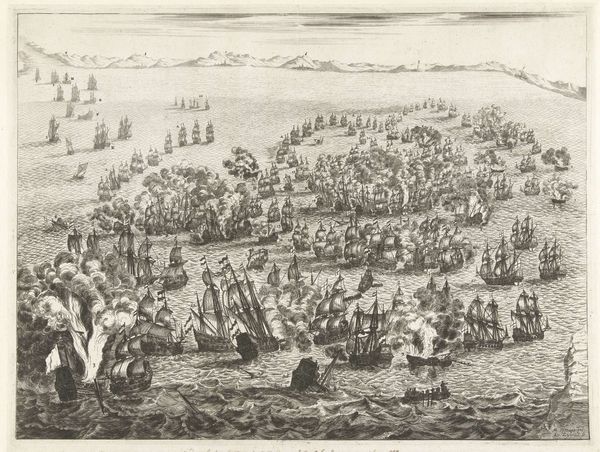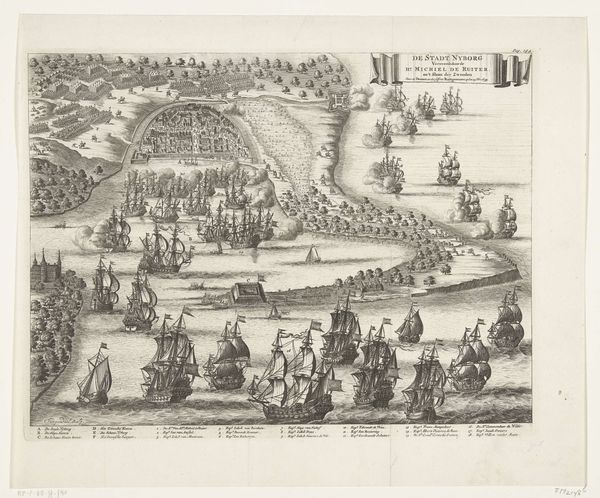
Driedaagse Zeeslag voor de Engelse zuidkust tussen de Staatse vloot onder Tromp en de Engelse vloot onder Blake, 1653 1654 - 1656
0:00
0:00
#
dutch-golden-age
# print
#
history-painting
Dimensions: height 135 mm, width 169 mm
Copyright: Rijks Museum: Open Domain
Editor: So this is a print from 1654-1656, titled "Driedaagse Zeeslag voor de Engelse zuidkust tussen de Staatse vloot onder Tromp en de Engelse vloot onder Blake, 1653," attributed to an anonymous artist. It depicts a naval battle and… it looks incredibly chaotic, a sea swarming with ships, smoke, and probably violence. What sociopolitical contexts shaped how such sea battles were conceived of? Curator: That's a great question! Prints like this were often commissioned to solidify a certain *narrative* of Dutch power and dominance during the Golden Age. Remember, the 17th century witnessed intense maritime rivalry, primarily with England. This print, showcasing the Anglo-Dutch Wars, should be read as a form of propaganda. Editor: Propaganda? I see. So the chaos we see might be intentionally crafted? Curator: Precisely! While attempting to depict the "reality" of naval warfare, it strategically emphasizes Dutch strength. Think about who these prints were *for*: the rising Dutch merchant class who were invested in their shipping being safe. How might portraying a narrative of strength play out for their interests? Editor: That makes sense! They'd want to feel secure in their investments and trade routes. Seeing their navy portrayed as powerful would instill confidence, even if the reality was more complex. Is it about building nationalism as well? Curator: Absolutely. Images like these constructed and reinforced a shared Dutch identity, a sense of pride in their maritime prowess. They also implicitly "othered" the English, portraying them as rivals in a power struggle. And, like any historical document, we have to interrogate its point of view. What perspectives are absent? Editor: So this print isn't just a record; it's an active participant in shaping perceptions and justifying political and economic agendas of its time. Curator: Exactly. It makes you consider the power dynamics embedded in seemingly straightforward historical images, right? Editor: Absolutely! It shifts the way I see the artwork, making it far more compelling. Thanks.
Comments
No comments
Be the first to comment and join the conversation on the ultimate creative platform.


